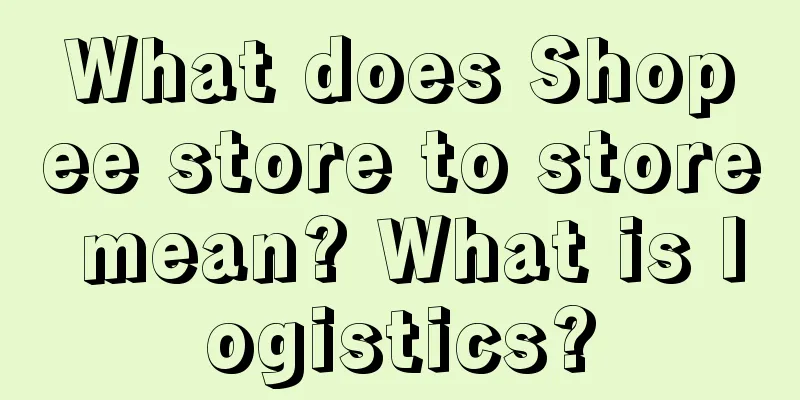The "beer + diapers" scam of the century

01 The story of "beer + diapers" became popularOver the years, I have mentioned the "beer + diapers" product combination case to many people. It was an article published in the Harvard Business Review in 1998, claiming that Walmart cashiers were surprised to find that there was always beer and diapers in the shopping carts when customers checked out. After investigation, it was found that this phenomenon has several characteristics: First, in terms of time, they buy diapers and drink beer more frequently on weekends than on weekdays; second, in terms of age, the children in the family are no more than two years old; third, they like to watch sports programs, and they watch them while drinking beer; finally, American sports programs are mostly concentrated on weekends. Therefore, when a young mother needs to change her child's diaper on the weekend, she usually asks the dad who is watching the game to buy it. When the dad goes out to buy diapers, he will bring back a bottle of beer. Later, Walmart would put diapers and beer together, and sales of both increased. Based on such data analysis and market verification, Walmart later asked Hormel Foods to produce a sports-related food that could be placed next to rifles and fishing rods. As a result, a camouflage-packaged canned pork product called Spamouflage was launched and became a hot seller in Walmart stores. This story spread to China and was imitated by many companies. How to scientifically display and sell product combinations became the mainstream discussion for companies to increase customer unit prices. 02Some details that go against business common senseWhen seeing this case for the first time, I believe 80% of people will be excited. By analyzing the shopping basket of users' shopping behavior in stores, it is still a model of big data application even in the present. But have you ever thought about what a user would feel when he sees beer and diapers piled together in a shopping mall? First of all, dads who buy diapers may think that these products are not suitable to be placed here. After all, putting baby items together with alcohol and food, even if they are all individually packaged, it also shows that the mall does not pay attention to hygiene. Secondly, if you don’t have kids, is seeing beer bundled with diapers like hanging a pair of socks on a Coke bottle? Finally, according to the user's original understanding , if he wants to buy diapers, he knows to go to the daily necessities area or the baby area, and if he wants to buy beer, he knows to pass by the wine and beverage shelf. When the supermarket suddenly restructures such a display, it actually increases energy consumption for users. Switch from the user side to the store side and think about it again: What percentage of all supermarket users are stay-at-home dads? Will planning the product mix of supermarkets based on the consumption data of such a niche group affect mainstream users? In fact, few apprentices of "beer + diapers" succeeded. This is due to two obstacles: The first is that in order to portray the needs of a niche market, the mass market is forgotten, resulting in picking up sesame seeds and losing watermelons. I once came across a restaurant selling noodles in an office park. This kind of restaurant either advocates halal throughout the store or caters to the general public. But in order to meet the needs of more users, he separated the store with glass, dividing it into a public area and a halal area. This approach took care of some minority users and made the store's reputation very good. But the problem is that during the lunch rush, the flow of people in the public area is much higher than that in the halal area. Some people even carry a bowl of duck blood noodles and eat directly at the table in the halal area. Judging from the final results, the operating performance of stores that are between the two states is not good. The second is that it touches upon a taboo in brand management: challenging users’ basic cognition. In the basic perception of users, unrelated products should not be put together, which will increase their decision-making energy consumption. If you force yourself to explain, rest assured that not many users will have the patience to listen to you. In all walks of life, there are already too many cases of compromise with basic user perceptions. For example, on the packaging of pure milk or milk advertisements, the most common picture we see is a cow eating grass outdoors. But in fact, the opposite is true. Cows must be kept in fences and eat some hay to produce higher quality milk, because eating grass affects their whey protein, and walking more outdoors will also affect the quality of milk. But have you ever seen a milk brand that uses cows in a fence as its packaging? Definitely not. Because in the traditional perception of ordinary users, if cows exercise more and are in better health, the quality of their milk will be better. Even if professionals know that this is wrong, they still do it because users only have common sense, not cognition and knowledge. Challenging users' basic cognition or trying to change it on your own is futile. 03 "Beer + Diapers" is just fake newsIn fact, if you trace the true origin of "beer + diapers", you will find that this is fake news. Daniel J. Power, a professor at the University of Northern Iowa, once wrote in "DSSResources" that this supermarket is not Walmart, but a pharmacy and convenience store brand Osco Drugs. The brand began a data mining project in 1992 and did find that customers purchased beer and diapers together between 17:00 and 19:00, but no correlation was identified by age or gender. In the end, the brand simply emphasized the need to put more beer and diapers on the shelves during this time of day, without any product combination or bundling of beer and diapers. This story, which has evolved into a big data case that is now praised by the entire industry, is actually fake news made up by a manager of Teradata. 04More data than scenariosAs fake news, we cannot deny the new data-based retail thinking brought about by "beer + diapers". So, how can we learn the real "beer + diapers"? The answer is that when using data as the basis for rational decision-making, it is necessary to review the consumption scenarios. Let me repeat the milkshake mistakes I mentioned before. In order to increase milkshake sales, McDonald's conducted a large number of user surveys and made many improvements to milkshake products based on feedback, but sales were still poor. Why? The scene is not well understood. During the subsequent research, McDonald's discovered a very special scenario. For example, more than 50% of the milkshakes were sold in the morning, and most users who bought milkshakes were alone and ordered a single portion to be taken away. When you really interpret it from the user's perspective, you'll find that people who buy milkshakes drink them while driving on their way to work. Milkshakes are perfect for breakfast while driving. The cup holders popularized by Toyota cars have long been popular in the United States, and a milkshake can fit right in. In addition, milkshakes are easier to handle than bagels, which may taste better but are too crunchy and will get all over your hands if you eat them while driving. On the long commute in the United States, sucking on a milkshake not only solves the breakfast problem but also kills boredom. In this scenario, users’ common demands for milkshakes, for example, are almost ignored. Instead, they may want thicker milkshakes to better relieve boredom. Therefore, McDonald’s previous research results are useless. Different products correspond to different user needs in different scenarios. It is obviously inefficient or even useless for us to blindly grasp the changing needs of users. Clarifying the scenario is the first step in developing a product. So, in this scenario, what would be better to pair with a milkshake? It could be something you need on your commute, or something the car owner needs. The scenario becomes the premise of product combination, and the data only provides a reference for decision-making. Author: Huang Xiaojun; Official Account: Jingyan Brand Lab (ID: JingyanLab) |
<<: Recommended collection: 7 Xiaohongshu tool models summarized by myself are open to the public
Recommend
Going to the big fair in a short video: The end of the universe is back to the village
As the New Year approaches, short videos about the...
What causes low Amazon product ratings? How to avoid them?
On the Amazon platform, there are many products wh...
Is Amazon self-operated or a third-party company? Is Amazon Global Shopping reliable?
On the Amazon platform, you can buy some overseas ...
TikTok has joined the price war, but which sheep is being fleeced?
Now more and more platforms are engaging in price ...
Shopee adjusts overseas warehouse fees in Thailand and Mexico
Shopee announced that it will adjust its overseas ...
What is the process and cost of opening a store on Amazon? How much money is needed to open a store on Amazon?
Now more and more people want to enter cross-borde...
What are the international payment methods? Introduction to eight common international payment methods
To do cross-border e-commerce business, you need t...
Recharge exceeded 23 million in one day, and revenue exceeded 100 million in 8 days. Is the first year of paid short dramas here?
Nowadays, the popularity of short dramas is gettin...
If you want to make money in your private domain, just post more on your Moments!
WeChat Moments is a great promotional platform for...
Discussing cost performance
When choosing products or services, you need to co...
I didn’t realize that I was working with the analyst incorrectly. Only when I used the right method did my business grow.
How can you solve these current confusions if you ...
It's hard to find a replacement for Zhang Yiming on TikTok
It is very dangerous for a company's business ...
How long does it take for a cross-border transfer to arrive? How long does it take for a long-distance transfer to arrive?
Nowadays, international trade is very popular. Man...
3,000 stores have been digitized, and the user scale has exceeded 20 million. What is the advantage of the private domain of "China's Shoe King" Aokang?
In the digital age, how does the traditional shoe ...
How much does a cross-border e-commerce store earn? How can merchants earn more?
More and more domestic merchants are opening store...









